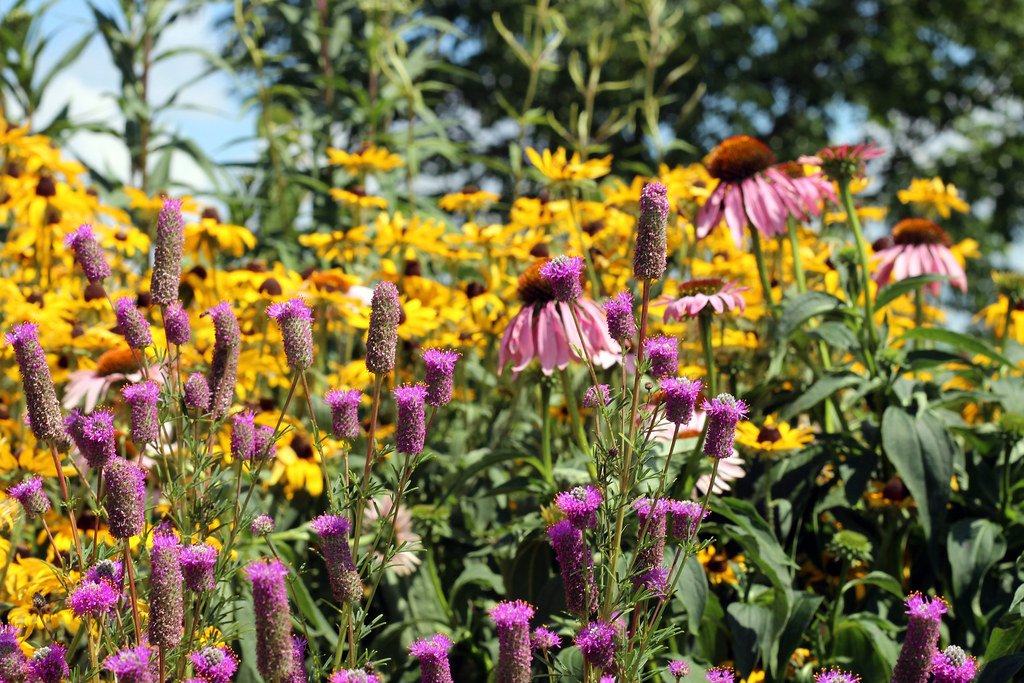When is a “native planting” not a native planting?
More and more people are becoming aware
of the importance of native plants in our landscapes. Native plants developed through millennia with our soils, insects and climate. They thus do not require the same amount of time and resources that nonnative plants require to succeed. They also provide important ecosystem functions (such as water filtration and retention, wildlife habitat, and food to pollinators). Given these benefits, and others, some well-intentioned individuals and organizations have begun to introduce native plantings in their landscapes. Just because a plant evolved in our area, however, does not mean that it will automatically succeed in a given space.
If you walk our Trails, you will have noticed several areas that are identified as a “Native Wildflower Planting.” Unfortunately, the majority of these spaces do not contain native plants (unless naturalized weeds are considered “native”). At some time during the spring, seed was scattered in these spaces, but because these areas were not weeded beforehand, the seeds had fierce competition. Given that the seeds were not watered post-scattering, they stood even less of a chance at success. Hence, we now have many areas that proclaim to be wildflower/native plantings, but they are not. They are beds of weeds.
The weed beds are giving the “natives” a bad rap. To be effective in establishing a native planting, transplants should be installed over seed. Transplants are much more likely to develop into strong plants over their seed counterparts. The use of transplants also has the added benefit of allowing one to place the plant where desired (allowing for more effective design). Additionally, while native plant perennials require far less water than nonnative perennials, they still need to be watered – and weeds still need to be removed from their space – during their establishment phase.
In sum, while a few “weeds” may make it on the wildflower/native plants list, a bed of weeds is not a native planting. The majority of the areas identified as native plantings in our Trails are not actual “plantings” of native plants, but spaces where the weeds outcompeted scattered and untended seeds. To get some inspiration for native plant designs, check out Kate Brandes’ book, Native Plants for the Small Yard or take a walk around The Conservation Foundation, our local library and other spaces where successful native plantings have been installed.
Resources:
Adelman, Charlotte and Bernard L. Schwartz. 2011. The Midwestern Native Garden: an illustrated guide. Athens: Ohio University Press.
Brandes, Kate. Native Plants for the Small Yard. Lehigh Gap Nature Center. https://lgnc.org/project/native-plants-for-the-small-yard/.

